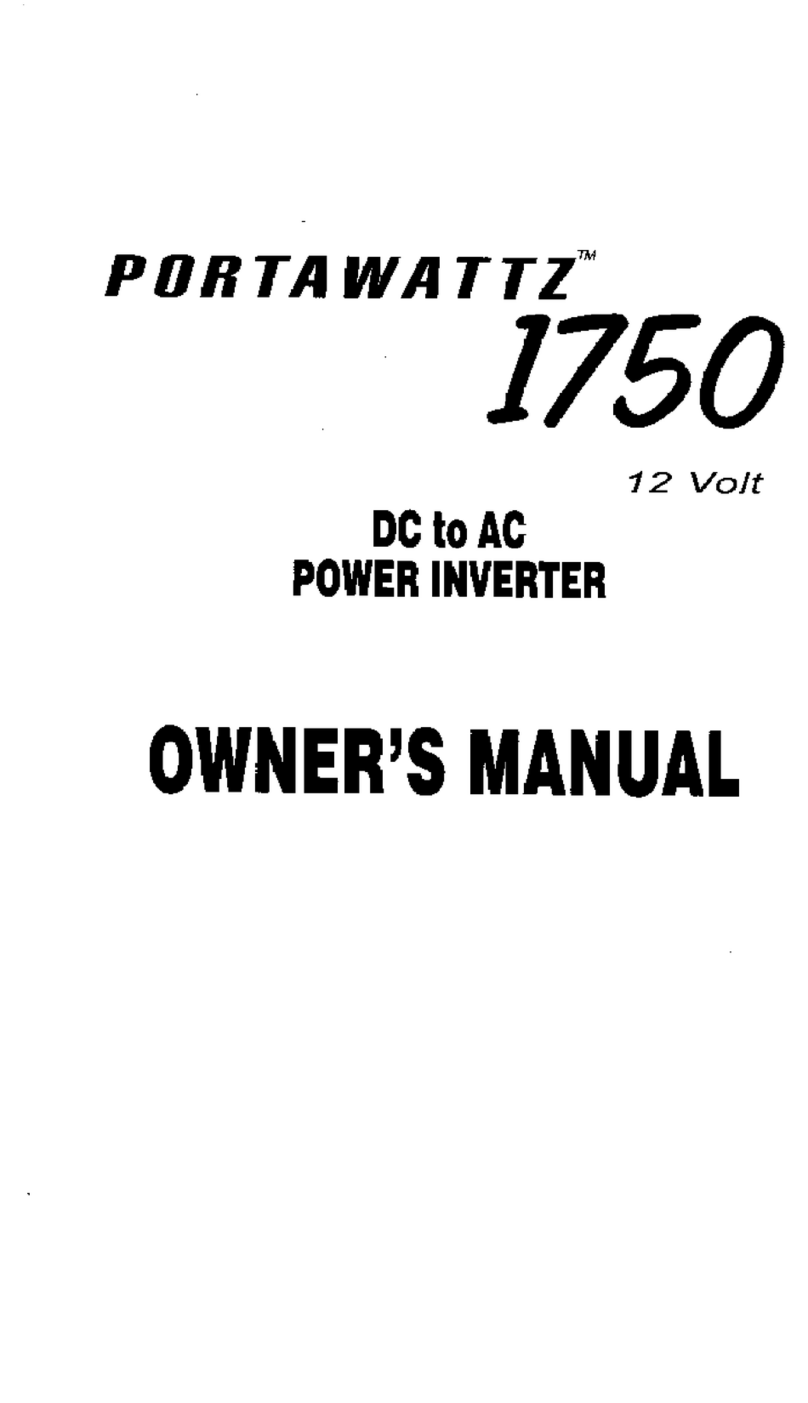1
1.0 Introduction
Thank you for purchasing the PORTAWATTZ 150 Power Inverter. The
PORTAWATTZ 150 is part of an advanced family of high performance
power inverters from Xantrex, the leader in the field of high frequency
inverter design. From the 12 Volt outlet in your vehicle or boat, the
PORTAWATTZ 150 will efficiently and reliably power a wide variety of
household AC products, such as compact TVs and VCRs, laptop
computers, camcorder and cellphone chargers, fluorescent lights,
soldering irons, etc. The PORTAWATTZ 150 employs reliable solid state
power electronics for years of safe, trouble free operation and includes
automatic safety monitoring circuitry to protect it, and your battery, from
inadvertent overload conditions.
Read this manual before installing or using the PORTAWATTZ 150
and save it for future reference.
The following main topics are covered in this manual:
·Important safety information
·Installation and operating instructions
·General principles of operation
·Warranty and service information































